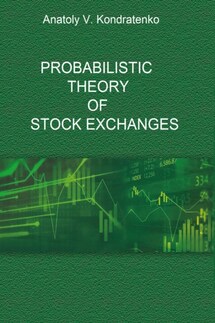Probabilistic Economic Theory - страница 28
3. Conclusions
In this Chapter we developed classical economies and derived the corresponding equations of motion, namely the economic Lagrange equations in the price space. Intuitively, we suppose that the applied least action principle can be treated to some extent as the market-based trade maximization principle. The relationship between these two principles becomes more clear within the framework of quantum economy (see the following Chapters). The extension of the method for the price-quantity space is straightforward therefore we will not do it here (respective formulas, figures and discussions can be found in Chapter I). Conceptually, we can regard Lagrangian as the mathematical classical representation of the market invisible hand concept. Note that, according to the institutional and environmental principle, Lagrangian include not only inter-agent interactions but also the influences of the state and other external factors on the market agents. Therefore, figuratively, we can say that the market invisible hand puts into practice simultaneously plans and decisions of both the market agents and the state, other institutions etc. As is seen from the above shown example, physical classical models or simply classical economies deserve thorough investigation, as they happen to become an efficient tool of theoretical economics. However, there are reasons to believe that quantum models where the uncertainty and probability principle is used for description of companies’ and people’s behavior in the market are more adequate physical models of real economic systems. Recall that probability concept was first introduced into economic theory by one of the founders of quantum mechanics, J. von Neumann, in the 40s of the XX-th century [4].
References
1. L.D. Landau, E.M. Lifshitz. Theoretical Physics, Vol. 1. Mechanics. Moscow, Fizmatlit, 2002.
2. L.D. Landau, E.M. Lifshitz. Theoretical Physics, Vol. 3. Quantum Mechanics. Nonrelativistic Theory. Moscow, Fizmatlit, 2002.
3. M. Intriligator. Mathematical Methods of Optimization and Economic Theory. Moscow, Airis-press, 2002.
4. J. von Neumann and O. Morgenstern. Theory of Games and Economic Behavior. Princeton University Press, 1944.
CHAPTER IV. Functions of Supply and Demand
“Economics is not about things and tangible material objects; it is about men, their meanings and actions. Goods, commodities, and wealth and all the other notions of conduct are not elements of nature; they are elements of human meaning and conduct. He who wants to deal with them must not look at the external world; he must search for them in the meaning of acting men”.
Ludwig von Mises. Human Action. A Treatise on Economics. Page 92
PREVIEW. What are Functions of Supply and Demand?
In the present Chapter the notion of supply and demand functions in the market, traditional to economics, is exposed to critical rethinking from the point of view of the uncertainty and probability principle. The Stationary Probability Model in the Price Space is developed for the description of behavior of a seller and a buyer in the price space of a one-good market in an economy being in a normal stationary state. Within the framework of the model, the terms supply and demand have changed their meaning; a new definition of the seller’s supply and the buyer’s demand functions is given. These functions are probabilistic in nature and they are normalized to their total supply and demand expressed in monetary units. In other words, they are the seller’s and buyer’s probability distributions in making a purchase/sale transaction in the market for a certain sum of money, respectively. Further, with the help of the proposed additivity and multiplicativity formulas for supply and demand, the Stationary Probability Model in the Price Space is extended to economies having many goods and many agents in the price space. With this strategy the probabilistic supply and demand functions of the whole market are constructed. As a main result of the work, we have laid the groundwork for probability economics. It is defined as a new quantitative method for description, analysis, and investigation of the model as well as real economies and markets.







